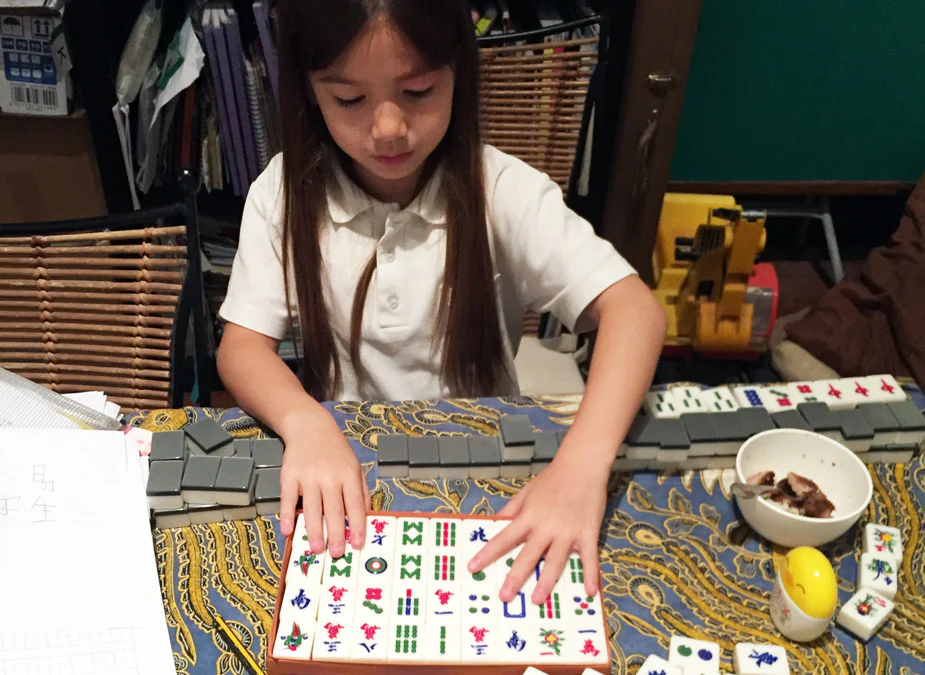Mahjong - an awesome family game!
Due to the wet weather, we were stuck at home.
We played all the board games we had at home. We then moved to playing cards. But we were running out of card games to play.
As I was staring at the corner of the living room struggling to come up with new game ideas, I saw an old Mahjong table that was acquired in pre-married days. Yes! I used to play Mahjong with my girlfriends on weekends. It was a great social event and we enjoyed chit-chatting during the game. All the fond memories flashed back…
Okay so we were set for the game of Mahjong!

There are many different versions of Mahjong in the world – Chinese, Taiwanese, Japanese and Western. I am not familiar with any version other than Chinese. Since I hadn’t played the game for a long time, I had to refer to the rule book to be reminded some basic preparation – seating, building the wall, breaking the wall and the deal.
Two suits of tiles are all in Chinese characters. So I had to spend sometime explaining to my kids what each one was. Coincidentally, my daughter just learnt the Chinese writing for directions (the Wind tiles) so she was quite proud she could already read those tiles while my son had to learn some new words! The Character suit was fairly easy for them as they were numbers in Chinese, from 1 to 9. (Although you may also buy Mahjong tiles with actual numbers on the side to remind you what the respective Chinese numbers are.)
Mahjong is a great workout for your brain. It’s pretty much about collecting the same tiles and tiles in order in the same suit. Since you can pung, gong and chow from other players’ discarded tiles apart from drawing them yourself, you have to pay careful attention in the game. For young children, it is a great training for their patience and observation. At the same time, you also need to keep track of your opponents’ games to avoid discarding tiles to their benefit. It is not surprising to read that mahjong has been found to preserve function and delay decline in elderly individuals with dementia, even in those with significant cognitive impairment. If you extrapolate this further – if it is good for the prevention of age-related decline, then it ought to be good brain training for younger people as well.
“Regardless of frequency of playing, mahjong produced consistent gains across all cognitive performance measures – digit forward memory, verbal memory, and MMSE. The effects lasted after mahjong had been withdrawn for a month, suggesting that constant practice is not necessary to achieve therapeutic effect once an initial threshold is attained.” – International Journal of Geriatric Psychiatry

We played a trial game with me explaining the rules along the way. My daughter, being a fast learner, started getting a grasp of it very soon. My son on the other hand got a bit lost and started playing with the tiles as if they were building blocks (Yay I can stop buying Legos haha)! We played a few games and I pretty much won all those games (you may also tie with no actual winner). I showed them my hand each time and explained how I won. At least that was how I learnt the game – from watching the grownups played at Chinese wedding banquets and dinner gatherings.
My kids (especially my daughter) really enjoyed learning how to play Mahjong and were looking forward to the next rainy weekend so we could all play the game again!
Here are some useful links for beginners of Mahjong:
Where to buy Mahjong tiles and tables in Hong Kong
Mahjong rules of different versions
Mahjong rules (Hong Kong version)

